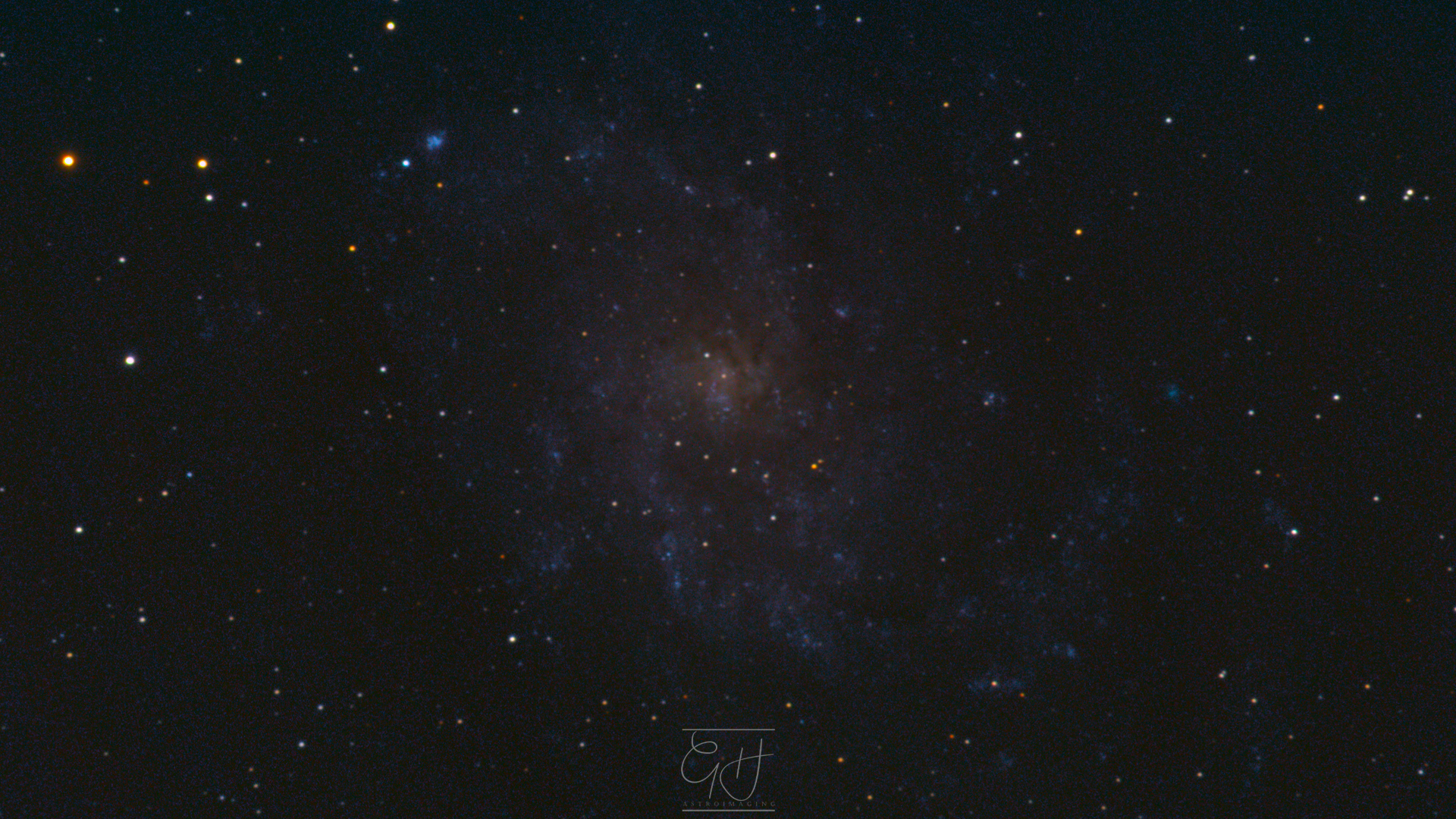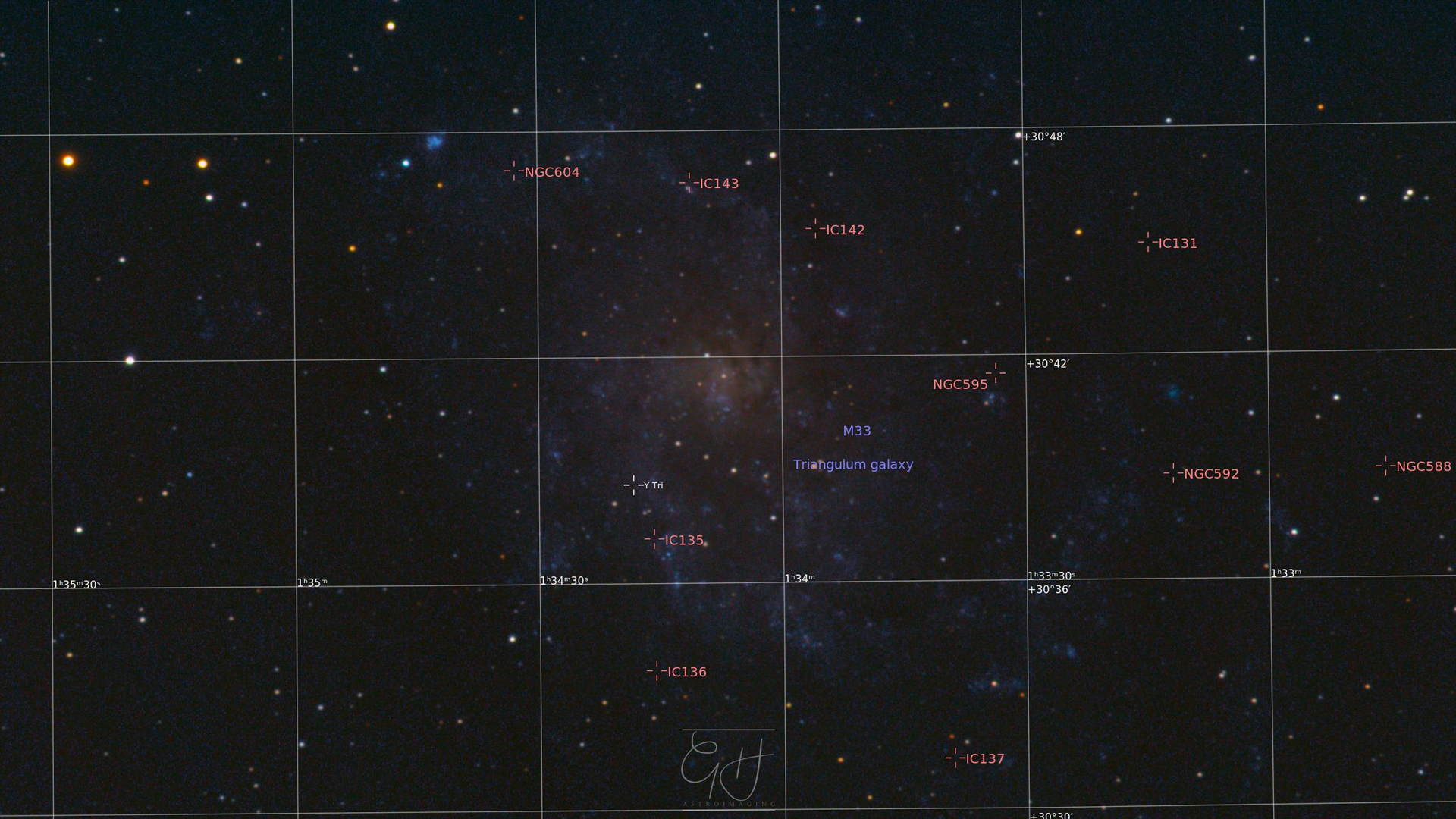The Triangulum Galaxy, November 16 2017


This image is of the Triangulum Galaxy, which also goes by the names M33 and NGC598. It is part of our Local Group of galaxies, which includes the Milky Way and the Andromeda Galaxies, among others. It is named for the constellation of Triangulum in which it is found.
Lots more information about this object can be found on its Wikipedia page.
The capture of this image involved a step up in complexity for me from my early imaging efforts. I added guiding to my setup, which involves a second camera being used to track a star on exposure times of only a couple of seconds, compared with many minutes of exposure for the main camera. The telescope mount is instructed to make tiny adjustments in its tracking to keep the star used for guiding as close as possible to the same pixels on the sensor of the guide camera throughout the main exposure. This helps to minimise any trailing of the stars in the main image that is the result of the mount not tracking the sky perfectly, which can be the result of many different factors including imperfect alignment of the mount's rotational axis with the rotational axis of the Earth, or of mechanical imperfections in the mount's drive system.
There are different ways to implement guiding for long exposure photography, but for this image I was using a device called an Off Axis Guider, which consists of an adapter that carries a small glass prism positioned at the edge of the light cone being captured by the telescope in order to divert some of the light to the guide camera. The prism is held in the edge of the light cone to ensure it doesn't create any shadow or other strange effects on what the main camera is recording.
You can view this image in the WorldWideTelescope by clicking here.










Sign in to enable commenting